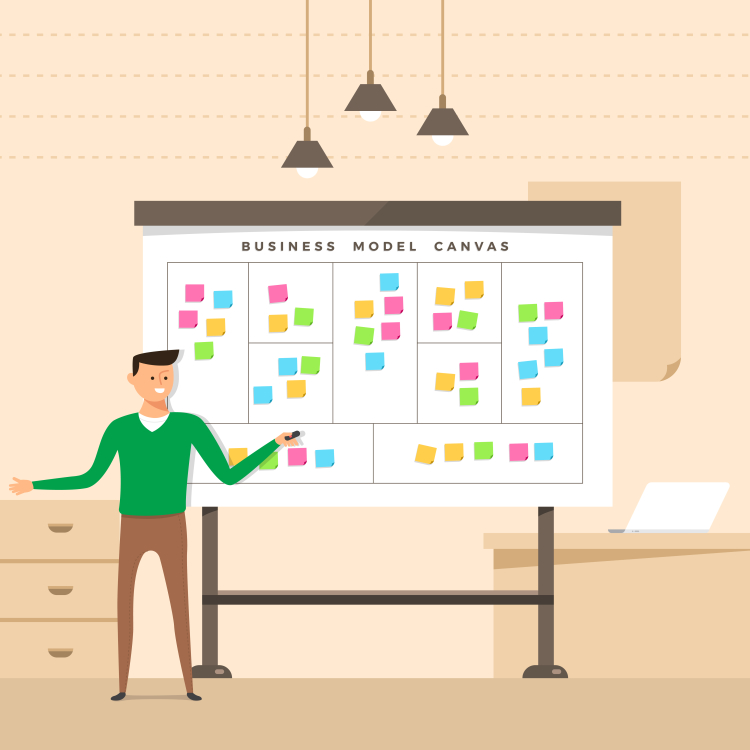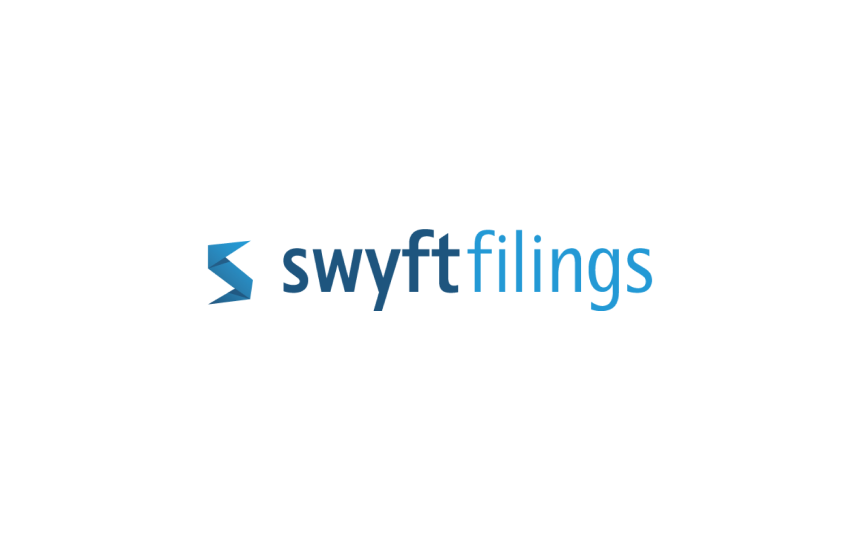10 Most Common Types of Business Models

Swyft Filings is committed to providing accurate, reliable information to help you make informed decisions for your business. That's why our content is written and edited by professional editors, writers, and subject matter experts. Learn more about how Swyft Filings works, our editorial team and standards, what our customers think of us, and more on our trust page.
Swyft Filings is committed to providing accurate, reliable information to help you make informed decisions for your business. That's why our content is written and edited by professional editors, writers, and subject matter experts. Learn more about how Swyft Filings works, our editorial team and standards, what our customers think of us, and more on our trust page.
What is a Business Model?
A business model is the company’s overall plan of operation within your market. If you’re unsure where to start, tools such as the Business Model Canvas walk you through decisions by segmenting the model into key parts of the operations—where the company conducts business, revenue sources and cost structure, partners or third-party vendors, customer base(s), how the product or service reaches the end user, how much interaction your company has with the customer, and more.
Types of Business Models
Because there are several business model types, it is common for companies to have a combination of different models in order to acclimate to changing consumer patterns. Here are the most commonly-used business model strategies:
1. Manufacturing
Examples: Hilti, Coca-Cola, General Motors
Simply put, manufacturing companies create products with raw materials or pre-made parts and components. Manufacturing companies focus solely on finished goods that are then sold to either consumers or other companies who utilize the finished goods. This model is common with large-scale production companies.
Launch a business starting from $0 + state fees
Safeguard your assets with liability protection
Be your own boss and own your business model
2. Distribution
Examples: Airgas, Anheuser-Busch, Morris & Dickson
Products are created and sold by retail outlets—but what happens in between? Distribution companies often work as intermediaries to connect the manufactured product to retailers, or even directly to consumers. Supply chain and logistics are heavily used in distribution companies, as there are copious channels that products are entered into. The end goal for distributors is that the products are sent to the correct end user.
3. Franchise
Examples: Massage Envy, Subway, Hyatt Place
Franchise ownership is the licensed privilege of a franchisee to conduct business with an already established and trademarked company. Franchises provide franchisees benefits such as trademark usage, marketing material, training, and other management resources. However, majority of franchises require anywhere from $50,000-$200,000 to start, as well as ongoing royalties to the franchisor, 4%-8% of gross revenue.
4. Brick-and-Mortar/Traditional Retail
Examples: PetSmart, Barnes & Noble, Mattress Firm
Retail is the sale of products to consumers, and goods are used primarily for consumption, not resale. Brick and mortar, or a physical building where a person can purchase goods, is the traditional and most conventional retail strategy. The future of brick-and-mortar businesses is highly debated due to the rise of E-Commerce.
5. E-Commerce/Online Retail
Examples: Amazon, eBay, Chewy
E-commerce, also known as internet commerce or electronic commerce, is the commercial transaction of money for goods and services through the internet. In 2017, consumers spent a total of $453.46 billion for retail purchases made on the web. Some purchases cannot be made on the web, like alcohol, gas, certain animals, and certain types of food—however, U.S. e-commerce grew by 16% in 2017, and numerous business owners either started an online business or modified their already existing businesses as a result of this growing trend.
6. Brick-and-Click
Examples: Wal-Mart, Target, Best Buy
Also known as “click-and-brick” and “click-and-mortar,” the brick-and-click model was created to fill the holes in the e-commerce (click) and retail (brick) models. This model is more accessible for consumers because they have the option to instantly purchase a product online; if they need to make a return, customers can travel to the nearest physical store at their convenience. With the brick-and-click model, the long-standing and larger-brand businesses have access to wider financial resources, which also assists in acquiring new customers.
Note: Although this model is meant to transform shopping into a more convenient experience, businesses face the challenges of both a brick-and-mortar retailer and an e-commerce business. Competitive pricing against manufacturers, logistics to distribute goods and manage inventory, and combining overhead expenses of both types of businesses are just a few conflicts that brick-and-click owners face.
7. Freemium
Examples: Spotify, MailChimp, Hootsuite
Have you ever used a free media streaming service with commercials, and the music or video stopped to offer you a commercial-free experience for a monthly fee? This is a “freemium” business— a combination of “free” and “premium”—a strategy that offers free versions of a product or service, but more advanced features at premium prices.
8. Subscription
Examples: Netflix, Birchbox, Dollar Shave Club
In a subscription business, the company relies on recurring revenue on a consistent schedule (weekly, monthly, annually). Subscription businesses require close attention to churn (the rate of unsubscribes), acquisition of new customers, and increasing the value of existing customers.
9. High-Touch
Examples: Supercuts, Law Firms, PR Firms
This model is where the idea of “having regulars” comes from—a high-touch business relies on the relationship and trust between a customer and the business. In a high-touch company, customers are more likely to interact with the same salesperson or consultant in the company. These types of businesses also charge a higher amount for specialized services due to the quality determined by the customer.
10. Low-Touch
Examples: IKEA, Swirll Yogurt
Also known as the “touchless conversion sales model,” the low-touch model requires little-to-no customer interaction with employees. Consumers are able to enter the business, receive the goods they need, and check out. In contrast to the high-touch model, prices tend to be lower as a result of smaller staff, less personalization of service, strong self-branding, and higher demand caused by social media. Logistics and product placement are also commonly designed for easy, grab-and-go access.
Having multiple business models is common, especially for companies who realize the need to engage in a more profitable revenue stream. Amazon, originally an e-commerce platform for books, now practices e-commerce, subscription, and freemium due to its marketplace expansion to media streaming and various items. Wal-Mart also adapted, offering brick-and-click services with the curbside pickup/return. Some items from Wal-Mart are solely e-commerce, not even allowing for in-store pick-up.
In today's constantly-changing environment, adaptability is crucial to keep up with emerging trends. Having a vision, purpose, and business plan, however, will help ensure that today's fad does not cause you to lose course of your true business goals, and more importantly, your business’s success.
Frequently Asked Questions
Looking for answers? You came to the right place. To learn more about our company mission and culture, click the link below.
You can form a corporation or LLC with our help for as little as $0, plus state filing fees for incorporation. Filing fees vary depending on the state you incorporate in. For more information on specific states, check out our state guides on the Swyft Resource Center. You can also email us with specific questions or contact us at 877-777-0450.
Swyft Filings accepts payment through Visa, MasterCard, American Express, PayPal, checks, and money orders. You can send any questions about payment to our email address or contact us at 877-777-0450.
It depends on what you ordered. If all you did was file your corporation or LLC, the price you paid when ordering is all you pay. You will have no further fees after that.
However, if you signed up for the Swyft Filings Registered Agent Service, you will be charged its initial fee three days after you place your order. From then on, you will be charged according to the terms of your subscription until you change your registered agent with the state or dissolve your company. If you change your agent or dissolve your company on your own, let us know so we can discontinue billing.
Other potential subscription-based options include SnapMailbox, 360 Legal Forms, and ComplianceGuard. If you opt for SnapMailbox or 360 Legal Forms, you will be charged a monthly fee after their respective 30-day free trials end. ComplianceGuard has an annual fee after a 14-day free trial. All three of these services are completely optional.
Our team processes all Standard orders on a first come, first served basis. If you opt for Express or Same-Day Processing, we prioritize your order and send it to the front of the line. However, no matter how fast we get it out the door, you’ll still have to wait for your state to address your filing.
Swyft Blog
Everything you need to know about starting your business.
Each and every one of our customers is assigned a personal Business Specialist. You have their direct phone number and email. Have questions? Just call your personal Business Specialist. No need to wait in a pool of phone calls.
Do what you love. We'll handle the paperwork.
Trusted by over 250,000 businesses since 2015. Start your business with confidence. Affordable. Fast. Simple.









